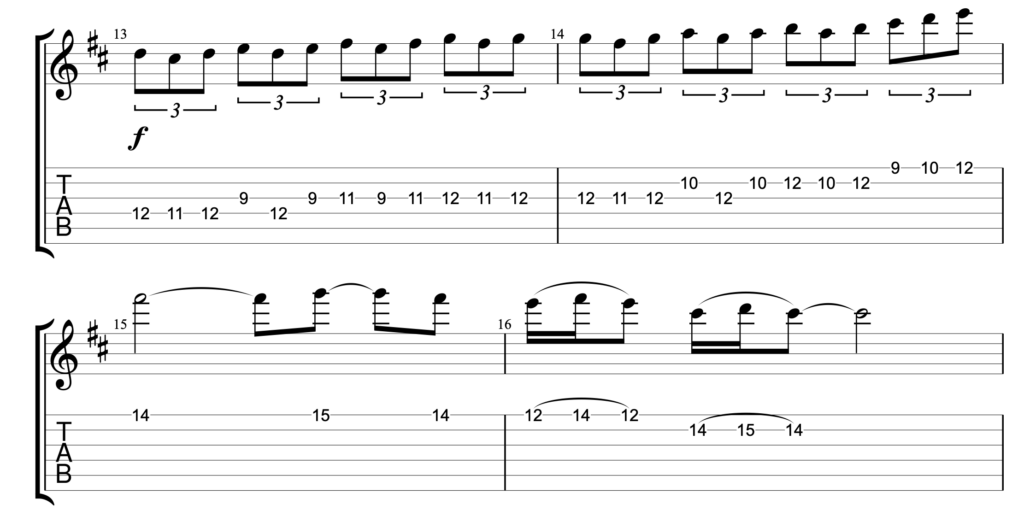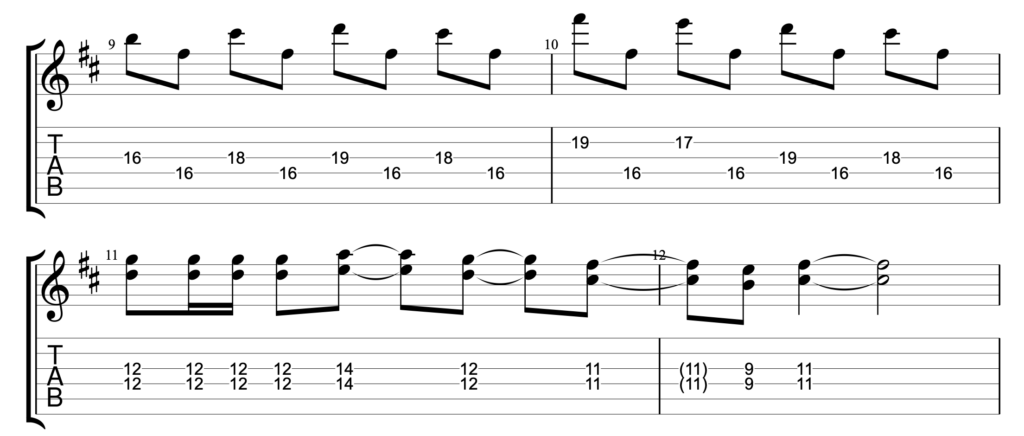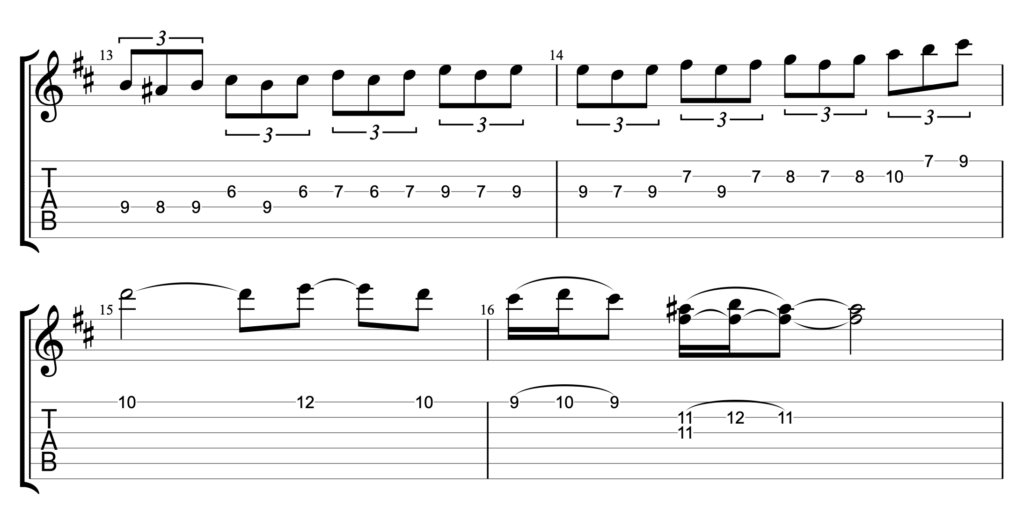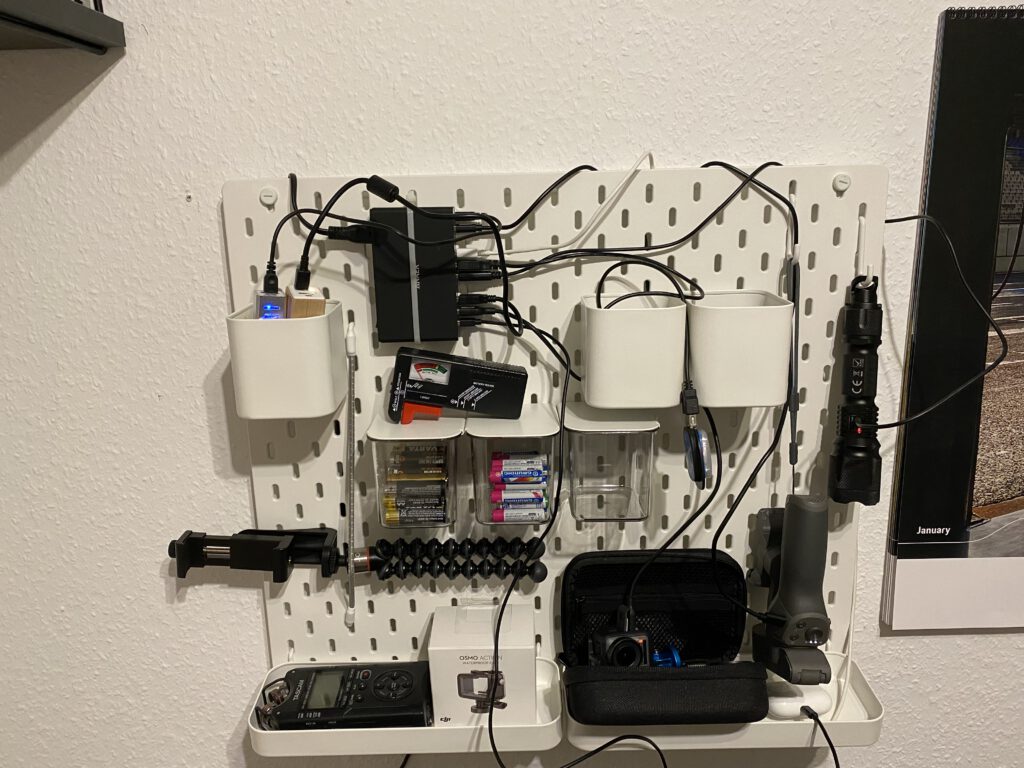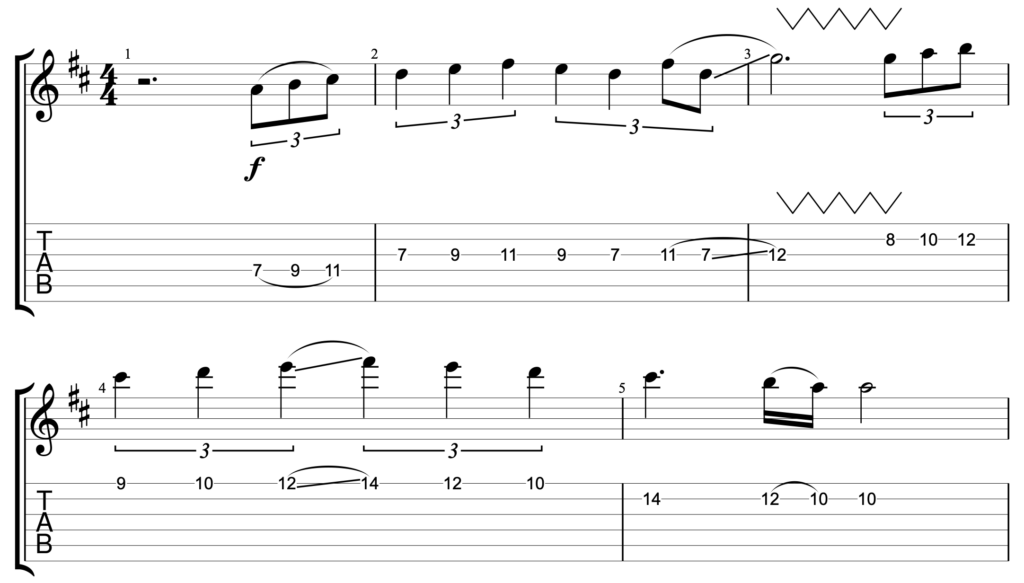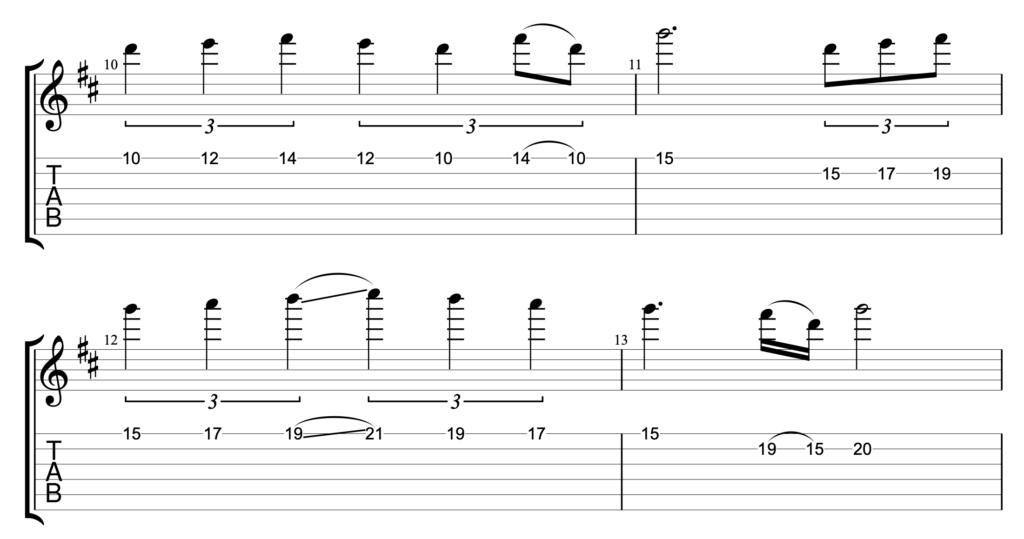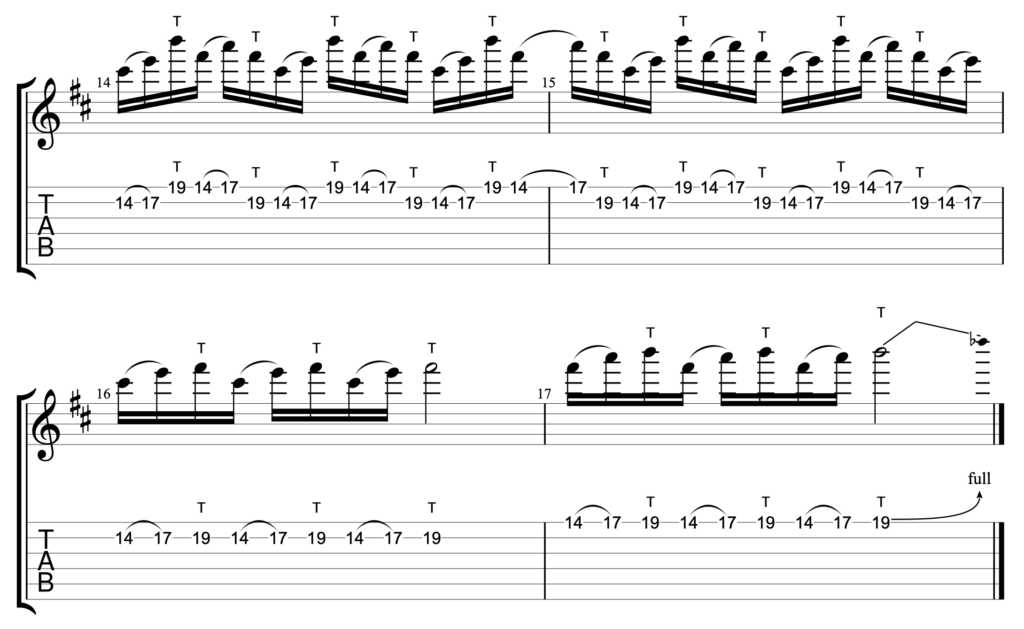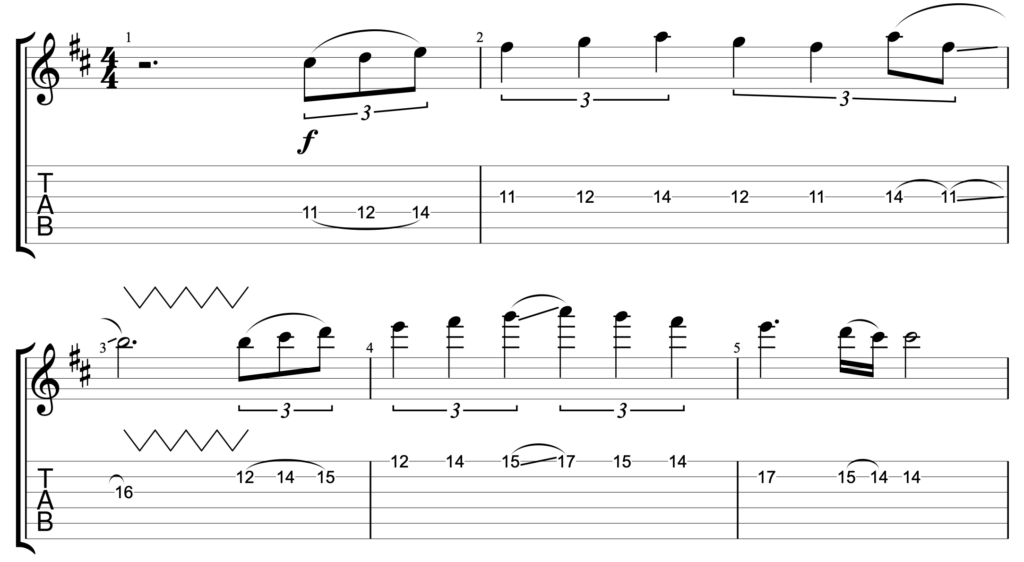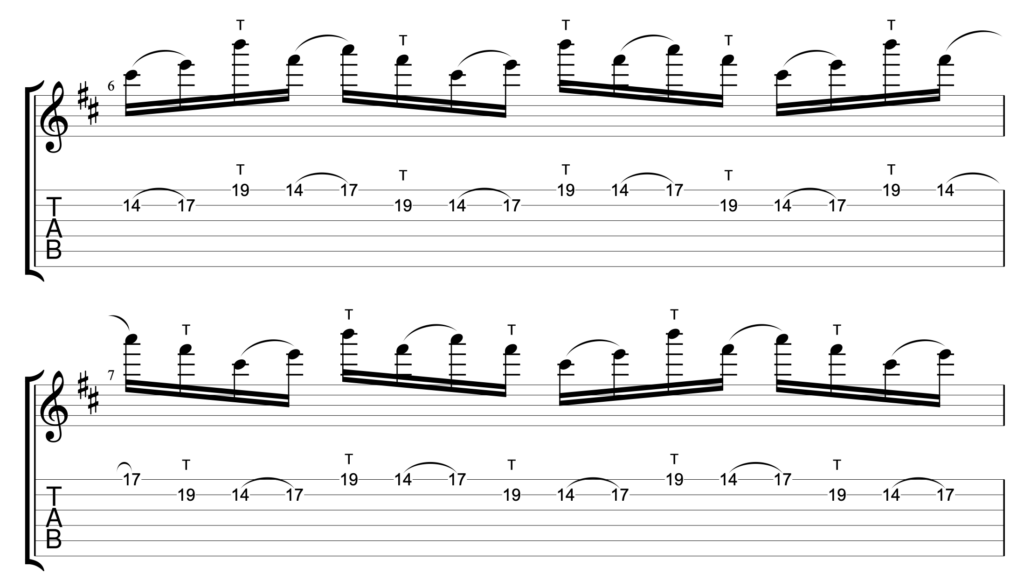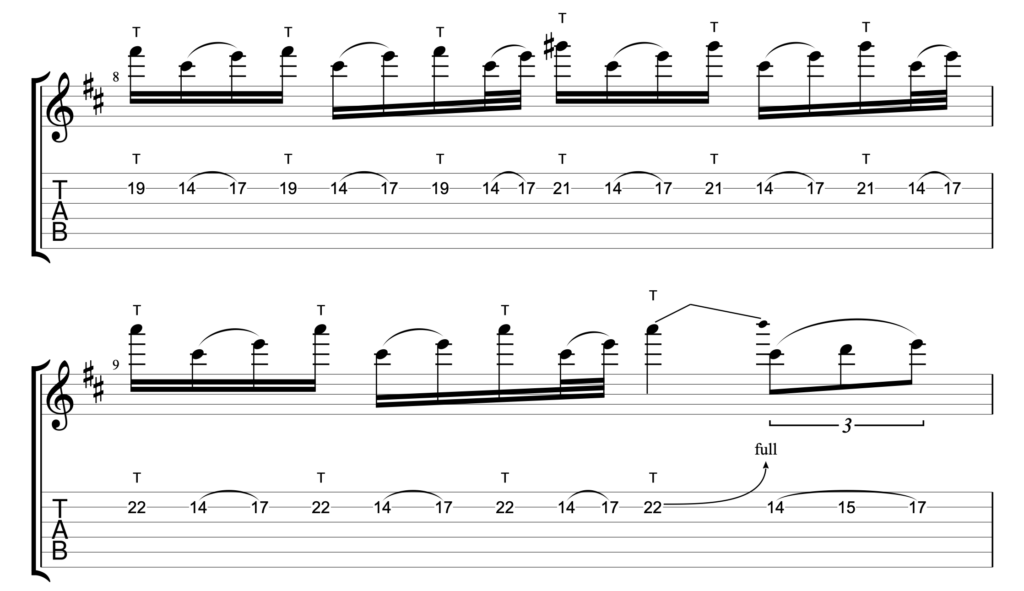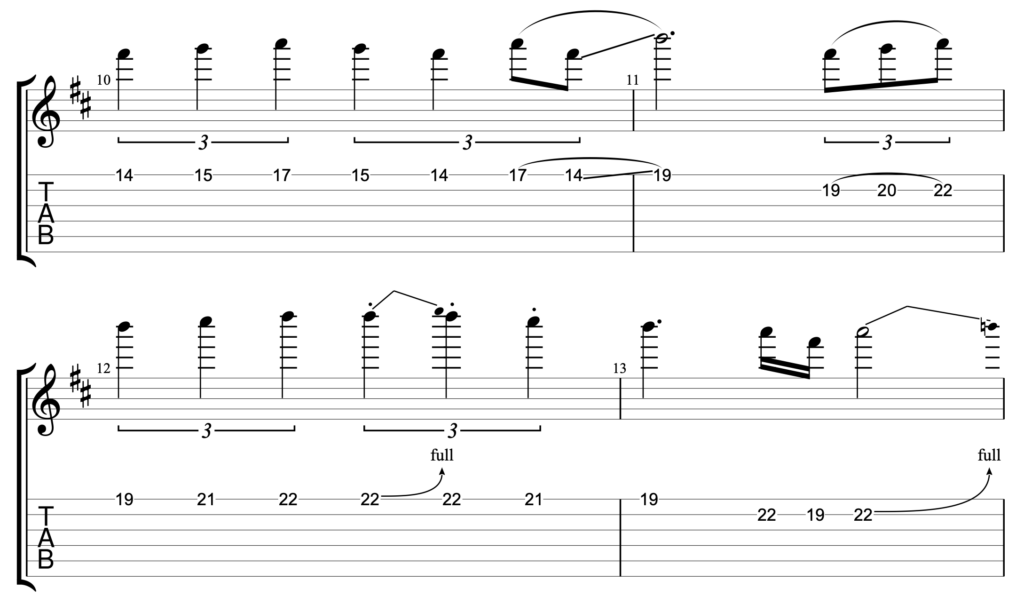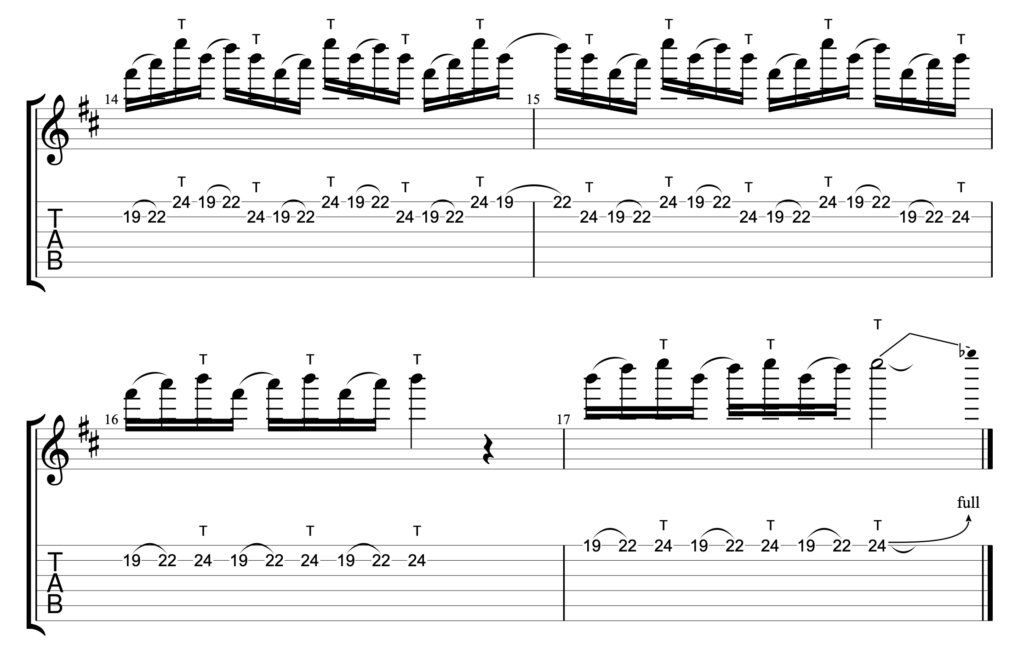Dieser Artikel ist Teil der Serie “Level Up! – 42 Gitarrensoli für ein besseres Sexleben”
Tonart-Analyse
Die Akkorde sind Em, D und C. Also haben wir es mit der Tonart G-Dur bzw. E-Moll zu tun.
Takte 1 bis 4
Bauen wir uns als erstes ein Motiv.
Unser Motiv fängt auf der 3 des ersten Taktes an und geht bis zur 2 des nächsten Taktes.
Rhythmisch interessant wird unser Motiv durch die Synkopen.
Das Motiv wird viermal wiederholt, wobei ich beim zweiten Mal lediglich die letzten zwei Schläge ändere.
Beim dritten Mal gehe ich eine Saite nach oben, beim vierten Mal außerdem hoch zum 17. Bund.
Spannung steigern wir also durch das Verschieben des Motivs über das Griffbrett.
Takte 5 bis 8
Noch mehr Spannung können wir aufbauen, wenn wir rhythmisch dichter spielen. Deshalb bringe ich in Takt 5 auch die Sechzehntel-Triolen.
In Takt 6 spiele ich wieder das Originalmotiv aus Takt 1, allerdings jetzt auf der G- und der D-Saite.
Dadurch verändert sich der Sound, da die tieferen Saiten etwas dumpfer klingen, und auch die Pinch Harmonics einen anderen Charakter haben.
In Takt 7 erzeuge ich noch mit einer kleinen String-Skipping-Idee etwas Aufmerksamkeit, bevor es mit entspannten Achteltriolen in den Zielton E geht (Bending vom 22. Bund aus).
GuitarPro
Download GuitarPro Datei Blood Angel
Ihr habt noch kein GuitarPro?
Ich würde mich freuen, wenn ihr es über den Amazon oder Thomann-Affiliate-Link kaufen würdet:
Guitar pro Version 8 (Amazon Affiliate)
Guitar Pro Version 8 (Thomann Affiliate)




